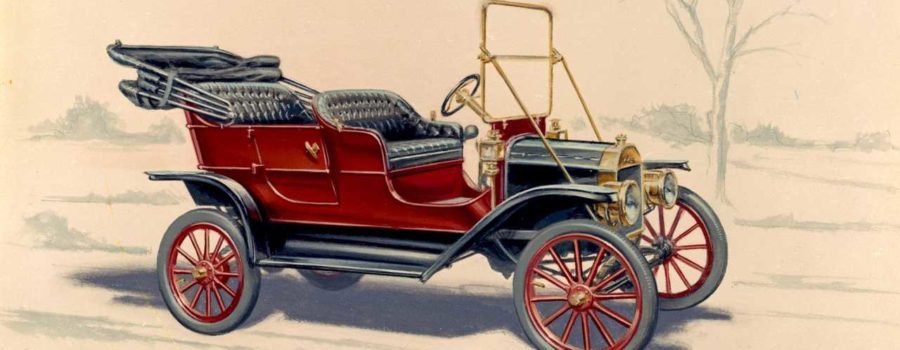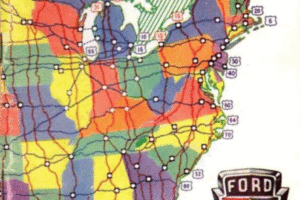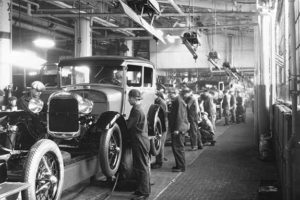by Jithin R. Veer
The concept of personal taste and a need to express one’s individuality is not new; it has arguably existed since the dawn of mankind. One of the ways people express themselves is through their possessions. Known as the “second-most expensive purchase” most Americans make today, the automobile is used by many people to express themselves. Apart from the type (sedan, convertible, minivan, sport utility vehicle, etc.) and the make of the car (Chevrolet, Chrysler, Ford, Toyota, etc.), the most important factor used by individuals to determine their automotive purchase is the color or hue of the car. Often, customers hinge their final decision to purchase a certain vehicle based on the customer’s reaction or perception about the color. Most car buyers will not have a problem finding a favorable color that matches their preferences. Aside from custom paint jobs available in the aftermarket automotive industry, most car manufacturers in the United States today offer a widespread selection of colors, covering practically every shade of the color spectrum. However, most car colors currently offered by manufacturers are darker shades of red, green, and blue, as well as silver, black, gray/silver, white, and beige/gold. A few sports cars and “youth-oriented” cars may offer less traditional colors such as yellow, violet, and bright orange. Due to large advances in the automotive painting process, different types of coating such as “clear coat,” “metallic,” and “pearl coat” allow for more variances in color.
However, the current wide range in colors available to automotive consumers was likely not available to customers purchasing a car at the turn of the 20th century. Neither was the spectrum of colors offered to customers during the 1950s the same as the spectrum offered today. How, then has the automotive color palette changed in the decades following the advent of the automobile? And what are the possible reasons for its development over the last century? Simply put, the evolution of color in the American automobile in the last century has been determined by economic issues facing the automaker, the national mood reflected in consumers, and the consumers’ tastes.
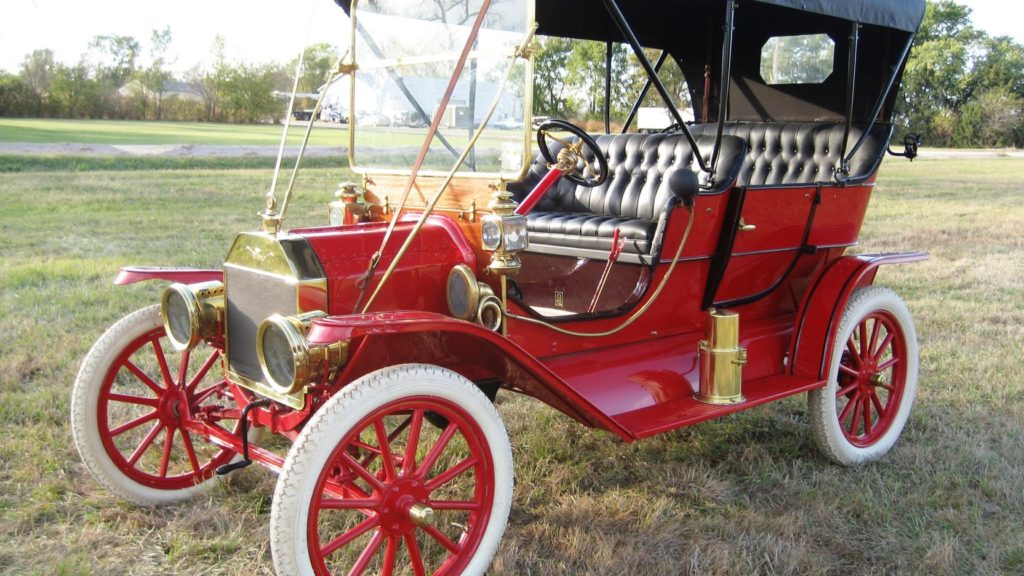
During the infancy of the automobile in the US, from the 1890s to the early 1900s, color was not an important issue to automakers. The automobile was in its earliest developmental stages, and the novelty of owning an automobile was distinctive enough for most wealthy customers who were able to afford a car. During this period, the Duryea Brothers developed the first car in the US, and Ransom Olds began to sell the first successful American automobile, the Curved Dash Oldsmobile. Henry Ford of Detroit, engineered his first car, the Quadricycle, and soon began developing production cars for his Ford Motor Company. The first cars were unpainted; if painted they were often painted dark gray or black. Black paint was used primarily because it was the least expensive. However, it is also likely black paint was used naturally because, during the gilded age, most machinery and objects of transportation, from carriages to steam railroads to iron-clad steamships were painted black. Black cars were also conspicuous. In the late 1890s and early years of the 1900s, laws in many American cities required cars or “motorized or horseless carriages” to travel no faster than 7 miles per hour and be escorted by a person walking in front with a flag, warning people of the approaching automobile.
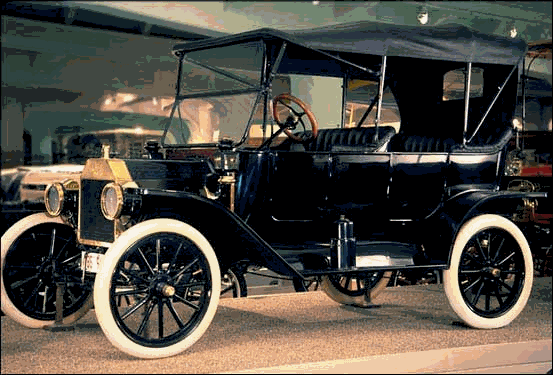
Nevertheless, most production cars by the end of the first decade of the 1900s offered a selection of at least a few colors, such as red, green, gray, and black, mostly in the darker shades. However, as automobiles were still considered a “toy of the wealthy,” automotive color did not hold much importance for the average consumer. It is common legend that Henry Ford once said something of this nature: “A customer may have a car in any color he desires, so long as its black.” Today, many people have taken this quote to mean that every Model T Ford, the car which undoubtedly made the American automobile affordable and “put America on wheels,” was painted black. This is not the case. From 1908 to 1914, Model T Fords were painted in a variety of 4 to 5 available colors. All colors of were of darker shades. Interestingly enough, black was not offered as a color initially. However, from 1914 to 1926, all Model T Fords were indeed painted black. The reason behind this color choice was purely economic: Ford wanted to produce the most number of automobiles in the least amount of time. Because black paint at the time was the least expensive and dried the fastest, black paint allowed Ford to produce a car in about 90 minutes – and satisfy the nation’s hunger for personal transportation at a relatively inexpensive price.
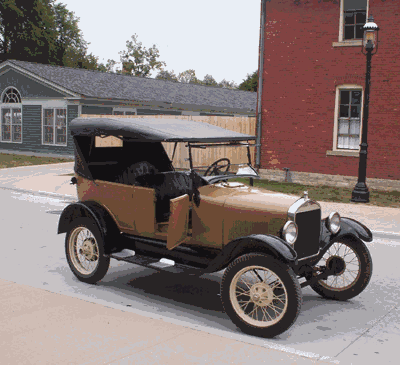
Colors were offered again by Ford in 1926 due to competition and a more efficient painting process.
The 1930s and 1940s saw dramatic change in automotive style, and an expansion in colors that accompanied it. During this period, more cars became more streamlined and cars began to look less like horseless carriages. Accompanying this change was a greater expansion in colors, with more variance in shades available. For the first time, buyers could find cars with several different shades of blue, green, or red. Colors also became brighter and less associated with darker, black-like colors. However, the 1930s in particular were marked with greater economic troubles for both the automobile companies and the buying public, due to the fallout from the Crash of 1929 and the economic downtown, or Great Depression, that followed. It was during this period that the greatest number of automobile manufacturers were forced to liquidate their assets and close shop. Many of the smaller companies catering to a small group of wealthy clientele were devastated, and with their disappearance the abundance of colors such as cream and tan slightly decreased.
The evolution of color in the American automotive industry has been determined by economic issues facing the manufacturer, the national mood, and consumer taste. These three factors have affected the colors available at any point in time in the last century. These factors also explain the divergence from the initial 4 to 5 colors available in cars (including black), to the current diversity of color. While color trends may help predict the immediate future, these three factors can also help track the evolution of automotive color preferences in the long-term future. In a way, the three factors described are not exclusive to just the evolution of colors in the American automotive industry. Outside events and factors, coupled with people’s own tastes and beliefs, will always affect their preferences and the evolution of choices they make throughout life.
View the full article here: http://www.people.vcu.edu/~djbromle/color-theory/color04/jithin/autocolor.htm



